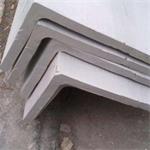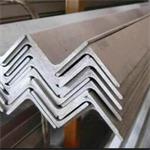Calculation method of theoretical weight of stainless steel angle bar
Weight per meter = (edge width + side width – edge thickness) × edge thickness × 0.00793
Overview
316L stainless steel angle bar is made of 316L stainless steel angle bar. 316L stainless steel is also called titanium steel, 316L steel and titanium steel, material grade: 022Cr17Ni12Mo2. Add Mo (2~3%), excellent pitting resistance, excellent high temperature resistance and creep resistance.
Stainless steel angle bar is a long strip of steel that is perpendicular to each other on both sides. There are equilateral stainless steel bars and unequal stainless steel bars.
The sides of the equilateral stainless steel angle are equal in width. The specifications are expressed in millimeters of side width × side width × side thickness. The specification of hot-rolled equilateral stainless steel angle bar is 2#-20#.
316L stainless steel angle bar features
1) The appearance of cold rolled products is good and beautiful;
2) Excellent corrosion resistance, especially pitting resistance due to the addition of Mo;
3) Excellent high temperature strength
4) Excellent work hardening (weak magnetic properties after processing)
5) the solution state is non-magnetic;
6) Relative to 304 stainless steel, the price is higher.
316L stainless steel angle steel bar physical properties and application range
1.Corrosion resistance
Corrosion resistance is better than 304 stainless steel, with good corrosion resistance in the production process of pulp and paper. Moreover, 316L stainless steel is also resistant to erosion by marine and aggressive industrial atmospheres.
2. Heat resistance
316L stainless steel has good oxidation resistance in intermittent use below 1600 °C and continuous use below 1700 °C. In the range of 800-1575 degrees, it is preferable not to continuously apply 316L stainless steel, but when 316L stainless steel is continuously used outside this temperature range, the stainless steel has good heat resistance.
316L stainless steel has better carbide precipitation resistance than 316 stainless steel and can be used in the above temperature range.
3. Heat treatment
The solution annealing is performed in a temperature range of 1010-1150 degrees, and then rapidly cooled. 316L stainless steel cannot be hardened by heat treatment.
Welding
316L stainless steel has good welding properties. All standard welding methods can be used for welding. When welding, 316Cb, 316L or 309Cb stainless steel filler rods or welding rods can be used for welding according to the application.
For best corrosion resistance, the welded section of 316 stainless steel requires post-weld annealing. If 316L stainless steel is used, post-weld annealing is not required.
4. Typical use
Heat exchangers for pulp and paper equipment, dyeing equipment, film processing equipment, pipes, materials for exterior use in coastal areas, and bracelets and cases for high-end watches.


